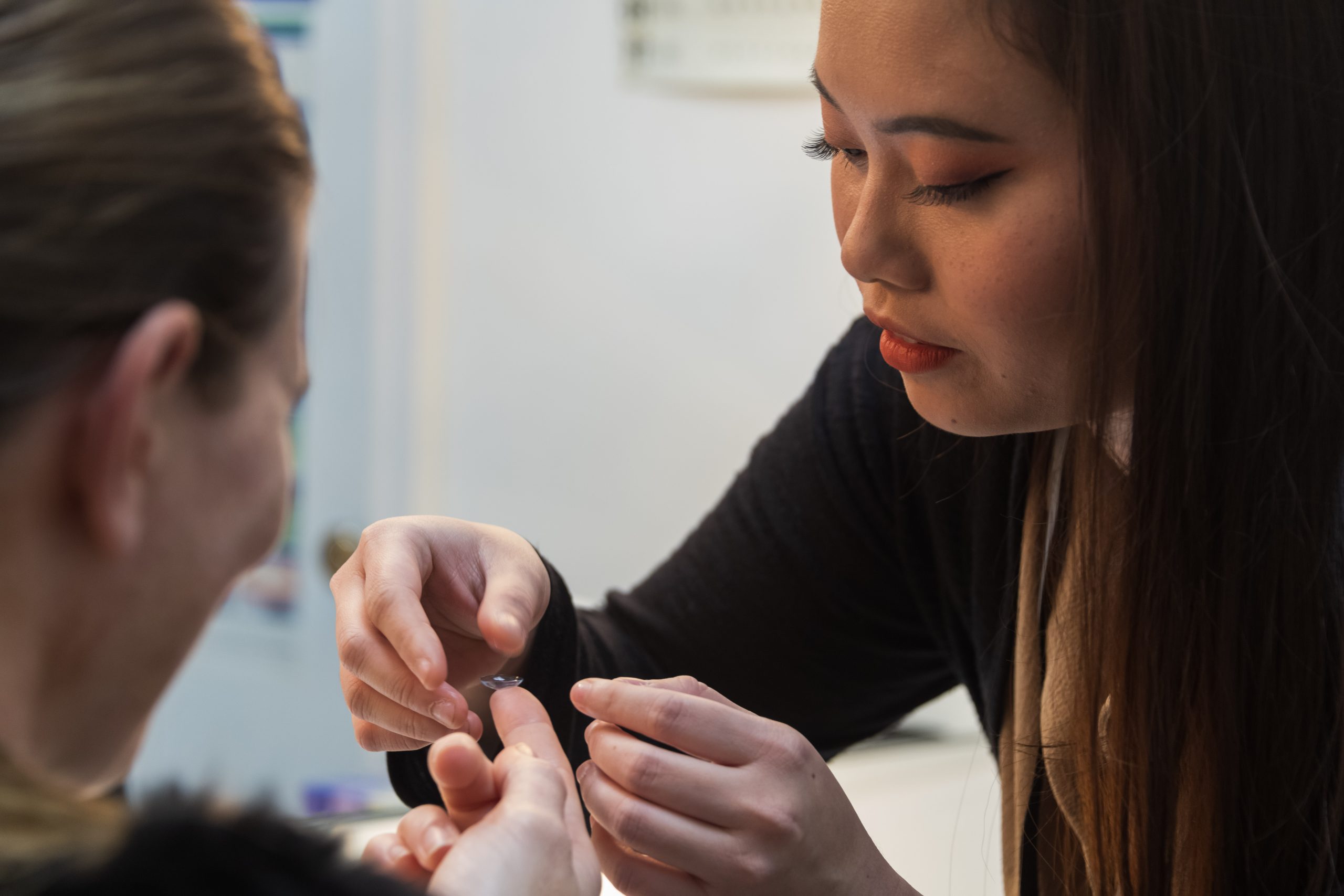Eyeglasses, contact lenses or both?

Eye Glasses
Eyeglasses reflect your individuality. Opticians help you make the right choices.
Once a prescription for corrective lenses is presented by a customer to an optician, there are important choices to make:
- Frame - plastic, metal, or a combination of the two
- Style and color
- Price
- Purchasing optional tints and coatings
If your choice of frame is restricted by the type of lens you require, your optician will show you a range of suitable frames, to help you make an informed selection. Your optician will advise you on the best choice for your eyeglass lenses, based on the safest, lightest materials and most suitable style possible with your prescription.



Contact Lenses
Consumers are increasingly choosing contact lenses to correct their eyesight. Contact lenses can be worn alone or alternately with eyeglasses. Before choosing contact lenses, discuss the option with an eye doctor, for medical clearance to wear them. Next, talk to an optician to ensure contact lenses will fit your lifestyle, and learn about the options available.
- Hard (rigid) and soft (flexible) lenses - what you choose depends on your correction, your lifestyle, the advice of your eye doctor and optician
- Lens styles & materials
- Tints
- Disposable lenses
- Extended-wear lenses
Contact lens fitting and dispensing in New Brunswick require special certification, ensuring that the optician who assists you is a Certified Contact Lens fitter. First-time contact lens wearers are routinely checked to ensure proper fit to avoid eye problems; and taught the right techniques for lens insertion, removal, and care, by a contact lens qualified optician.
Eyeglass correction options:
- Prescription reading glasses - If you have no other vision problems, you can use glasses with prescription lenses for reading only. You will need to remove these when not reading.
- Bifocal lenses provide both distance and close-up corrections with a visible horizontal line separating your distance prescription (above the line), and your reading prescription (below the line).
- Trifocal lenses have corrections for close-up vision, middle-distance vision (such as for computer screens) and distance vision. Trifocals come with two visible horizontal lines in the lenses.
- Progressive multifocal lenses have no visible horizontal lines, but multiple powers for distance, middle-distance and close-up corrections. Different areas of the lens have different focusing strengths.
- Office progressive lenses have corrections for close work. These are used for computer work or reading and removed for walking or driving.
Contact lens correction options:
Contact lens are a great option for those who do not have certain conditions related to the eyelids, tear ducts or the surfaces of your eyes - such as dry eye. If your eye doctor feels you are a candidate for contact lenses, there are a variety of types that may be prescribed.
For more information see a licensed contact lens specialist.
Look for the C, for "Contact Lens Licensed" on your Optician's photo ID for certified care.